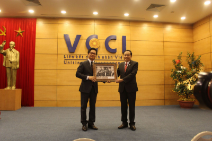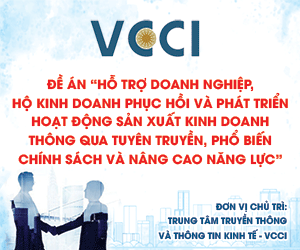Real Estate Market New Cycle with Opportunities and Potential Risks
“In 2025, the Vietnamese real estate market enters a new phase, marked by recovery and growth driven by macro factors, favorable policies and shifting investment behavior,” said Mr. Tran Quang Trung, Director of Business Development at OneHousing.

Real estate is considered one of the top havens for generating cash flow, offering stable returns for investors
“Safe haven” for cash flows
The 2025 market is expected to see positive macro signals, including easing monetary policy, lower interest rates and the emergence of a “cheap money” cycle. Credit packages, public investment and strong FDI from international corporations will also boost confidence among both domestic and foreign investors.
In fact, deposit interest rates have declined quite rapidly after the State Bank of Vietnam (SBV) "blew the whistle" on banks that hiked their deposit interest rates in the market (where transactions between financial institutions with businesses and people take place).
According to the Vietnam Association of Real Estate Brokers (VARS), "cheap money" pumped into the market will certainly find profitable investment channels which can accumulate assets for the long term. Given that gold has risen to record highs and has been volatile, real estate and stocks will be top havens for cash flows. In particular, real estate, which is sensitive to monetary cycles, can soon react to interest rate reduction, thus creating a new investment wave, especially when the real estate market is recovering and the SBV is moving to increase credit for the real estate sector.
According to the SBV, as of December 31, 2024, credit for the real estate sector rose by 16.11% from the end of 2023 (higher than the 15.08% credit growth of the economy). Outstanding real estate consumer loans still accounted for the largest share (about 60%) and outstanding real estate corporate loans accounted for about 40%. Outstanding real estate credit of the system was about VND3,480 trillion as of February 20, 2025.
Currently, concerns about inflation and economic instability have been somewhat eased, Trung said. Market sentiment has shifted from "defensive" to "calculated risk acceptance". Gold prices have repeatedly hit historic highs and the stock market has strongly attracted cash flows, which have made real estate a safe haven and a profitable asset in the long run.
Moreover, a factor that has led to a market boom is the policy of merging provinces and reallocating administrative centers. This is a strong ‘catalyst’ that makes investors rush to buy land in many places such as Hai Phong, Bac Ninh, Bac Giang and Hai Duong.
However, Trung also warned that the information about merging provinces is catalyzing investors to rush buying with the FOMO sentiment (Fear of Missing Out). They may easily get stuck in the long term because the price has far exceeded the real value, he added.
Potential apartment price hikes
Currently, the real estate supply is recovering and growing positively. According to VARS, in 2024, the market saw a record of 65,376 new products for sale, about three times higher than in 2023. The supply of residential property in 2025 is also expected to recover broadly and grow 10% from 2024. In the medium term, housing supply is expected to improve as existing projects overcome obstacles and new projects, including social housing, are licensed.
According to OneHousing's research, in Hanoi, there are concerns that apartment prices are too high to see significant growth. However, expert analysis showed that when converted to gold, price growth remains comparable. Additionally, while incomes haven’t increased significantly, the government has eased living costs through measures like exempting tuition and hospital fees, allowing people to save more.
| By 2030, Hanoi is projected to have 2 million more residents and require over 1 million housing units. However, with only 30,000 units expected in 2025, there is significant potential for price growth due to the long-term supply-demand imbalance. |
In March 2025, Hanoi saw a series of special developments: Three low-rise projects and five high-rise projects with about 10,000 apartments in total were officially launched. Besides major investors like Vinhomes, Masterise Homes and MIK Group, new investors also appeared, including Xuan Cau and Tan Hoang Minh.
According to VARS experts, in the coming time, when new laws concerning housing, land and real estate business are enforced, along with the provincial merging plan, investors are expected to face current challenges but will benefit from more streamlined procedures to launch projects. The absorption rate in 2025 is estimated to stay above 70% although it has slowed down due to high and rapid price surges in some areas and segments. At the same time, real estate prices still have many growth drivers amid looming inflationary pressures.
Regarding social housing development, according to SBV Governor Nguyen Thi Hong, it is critical to determine the need for home ownership, the need to buy, the need to rent in each locality and clarify the purposes of building houses, for sale or for rent. If the real needs are not clearly understood, low-income earners may struggle as they seek to buy homes in business districts for easier access to work, while social housing is being built in the suburbs. She also emphasized that bank credit is only an additional support solution, not a decisive factor for implementation. If bank loans are employed, it is possible to consider using the budget capital entrusted through lending banks or establishing a fund to entrust loans through credit institutions. Upon accepting entrustments, credit institutions can lend the fund for a longer term, with more preferential interest rates. At the same time, it is important to have additional support policies on land tax, interest rates, investor designation and reduced procedures to develop social housing.
Governor Nguyen Thi Hong reported that the SBV has successfully engaged nine banks to register VND45-55 trillion for lending over 15 years at 1-3% lower interest rates, as part of two bank-led lending programs. Currently, 37 out of 63 Provincial People's Committees have 90 projects, 40 of which require loans. Regarding the program for young people to borrow money to buy homes, most are more focused on renting rather than purchasing, suggesting the need for a reassessment.








